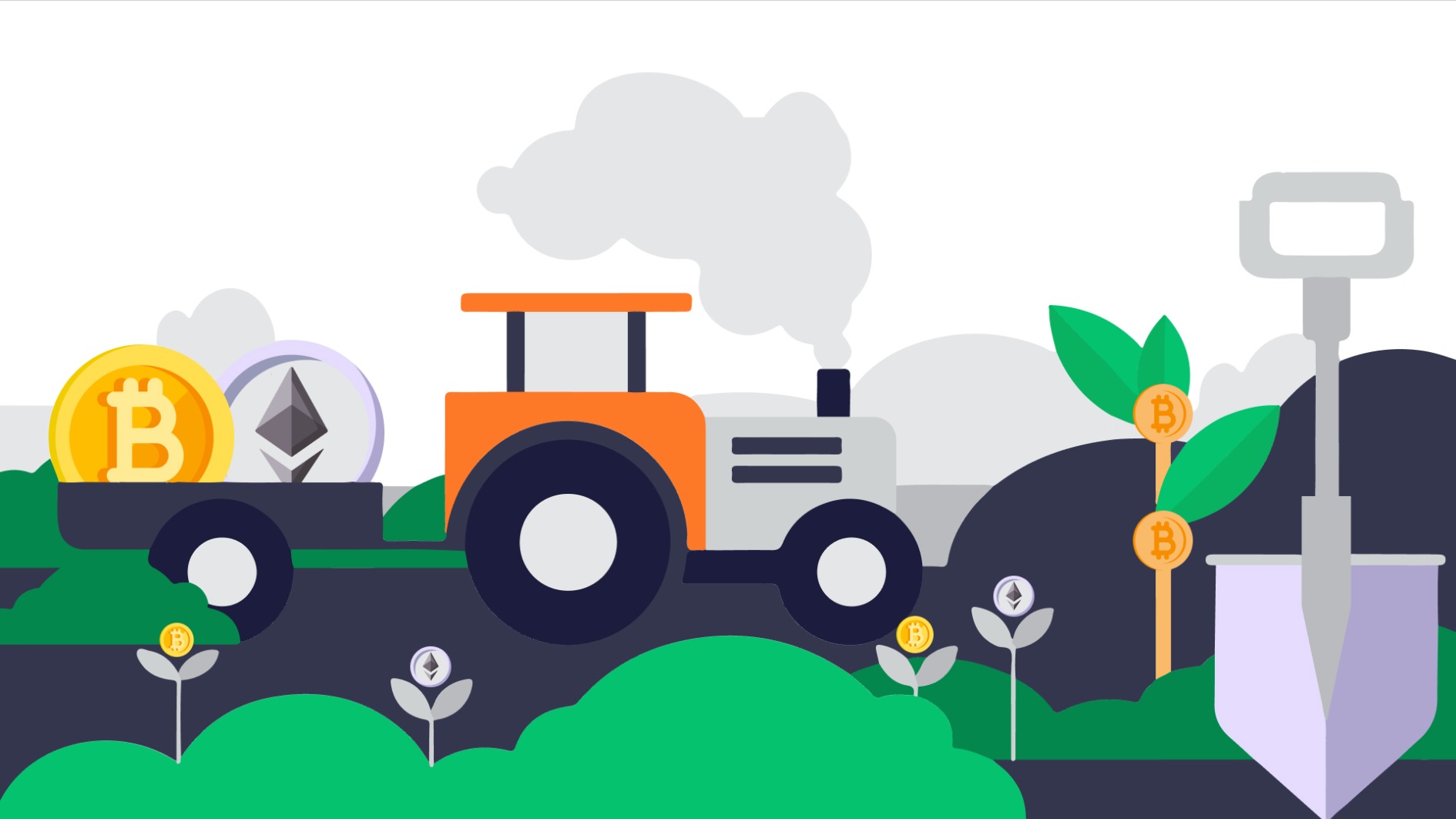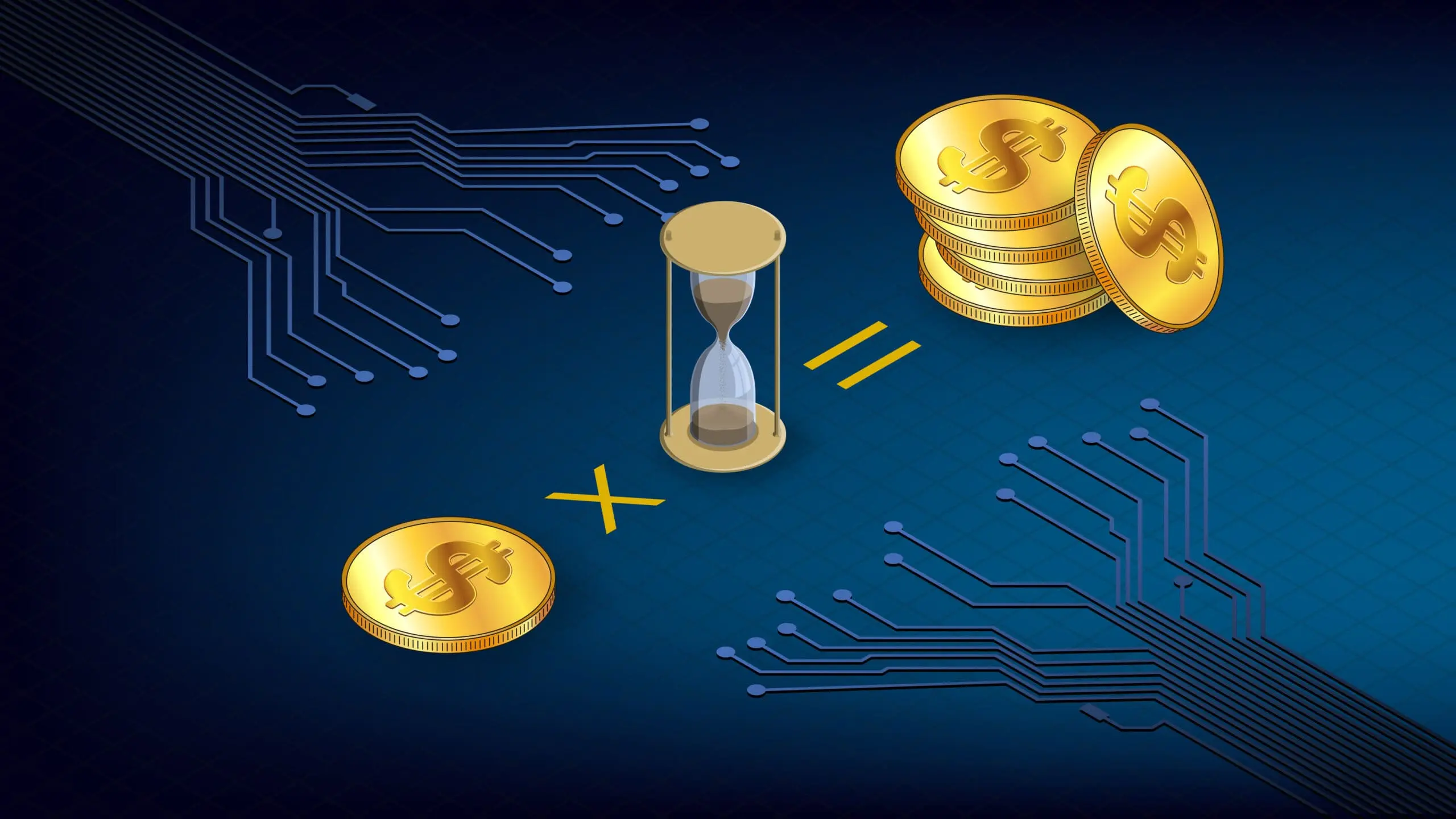Last Updated:
Jul 23, 2025
Staking and farming: How to earn passive income in the crypto world
Last Updated:
Jul 23, 2025

Author
Share this article
Staking and farming are two of the most popular ways to earn passive income in the cryptocurrency world. These methods allow investors to generate rewards without having to actively trade or buy/sell assets. In this article, we'll explore what staking and farming are, how they work, and how you can benefit from them.
What is staking?
Staking is the process of locking up a certain amount of cryptocurrency in a blockchain network to support its security and operations. In return, stakers receive rewards in the form of additional tokens. This process is mainly used in proof-of-stake (PoS) and other consensus mechanisms that don’t require energy-intensive mining.
When you stake your tokens, you essentially contribute to the network’s ability to process transactions and secure its blockchain. The more tokens you stake, the greater your chance of earning rewards.
Example of staking:
Suppose you have 1000 ETH and decide to stake them on the Ethereum network. In return, you may receive rewards in ETH over time. The annual percentage yield (APY) can vary depending on the network, the amount staked, and other factors.
Why is staking important?
Passive income
Staking allows you to earn a steady stream of passive income from your cryptocurrency holdings. The rewards you receive are typically distributed regularly, and some networks even offer compounding interest, increasing your rewards over time.
Supporting the network
By staking, you help secure and validate the network, making the blockchain safer and more reliable for everyone. This gives you a sense of contributing to the ecosystem while earning rewards.
Increased value of staked tokens
Some staking rewards may increase the value of your tokens over time, especially if the network grows in popularity or usage. As demand for a particular token increases, the price could rise, increasing the value of your initial stake.
What is farming?
Farming, also known as yield farming, is the process of providing liquidity to decentralized finance (DeFi) platforms in exchange for rewards. These rewards can be in the form of tokens, which can either be native to the platform or come from other projects. In farming, investors provide liquidity to decentralized exchanges (DEXs) or other DeFi platforms to facilitate trading or lending.
Farming usually involves using a liquidity pool, where you deposit your tokens and allow the platform to use them for various decentralized finance operations. In return, you earn a portion of the fees or new tokens issued by the platform.
Example of farming:
If you provide liquidity to a UniSwap pool with ETH and USDT, you will receive rewards in the form of the platform's governance token, UNI. These rewards may increase depending on the liquidity provided, and some platforms offer bonuses or extra tokens to incentivize users.
Why is farming important?
Maximizing returns
Farming often provides higher returns than staking because you are providing liquidity to DeFi platforms, which can have more frequent and higher rewards than staking networks. However, farming also comes with higher risks, as DeFi protocols can be vulnerable to hacks or bugs.
Liquidity provision
By participating in farming, you help provide liquidity to DeFi platforms, enabling smoother and faster transactions on decentralized exchanges. This is important for the growth of the DeFi ecosystem, as liquidity is essential for decentralized finance to function properly.
Access to new tokens
Many DeFi platforms incentivize users to farm by offering new tokens or governance tokens. This allows you to earn tokens for providing liquidity, which may appreciate in value over time.
Differences between staking and farming
Mechanism
Staking is about locking up tokens to support a blockchain’s security and validation. In contrast, farming involves providing liquidity to DeFi platforms in exchange for rewards.
Rewards
Staking rewards typically come from the network itself, while farming rewards are often generated by DeFi platforms through liquidity provision and transaction fees.
Risks
Both staking and farming come with risks. Staking risks include potential slashing (loss of staked tokens) if you misbehave or the network is attacked. Farming, on the other hand, has higher risks due to potential impermanent loss (loss due to price fluctuations of assets in a liquidity pool), smart contract vulnerabilities, and the risk of platform hacks.
How to get started with staking and farming?
Choose the right platform
For staking, you need to choose a cryptocurrency that uses a PoS or similar consensus mechanism. Some popular platforms for staking include Ethereum 2.0, Cardano, and Polkadot.
For farming, you need to choose a decentralized exchange (DEX) or DeFi platform. Some popular farming platforms are Uniswap, SushiSwap, and Aave.
Understand the rewards and risks
Before getting involved in staking or farming, it’s essential to understand the potential rewards and risks. Make sure to research the project thoroughly and read about the rewards structure, transaction fees, and any risks associated with the platform.
Start small
If you’re new to staking or farming, start with a small amount of capital. This will allow you to gain experience without putting too much at risk. As you become more comfortable, you can increase your investment.
Conclusion
Staking and farming are powerful ways to earn passive income from cryptocurrencies. While staking offers a more straightforward way to earn rewards by supporting the network, farming provides higher potential returns by offering liquidity to DeFi platforms. However, both come with their risks, so it’s crucial to understand the mechanics before diving in.
Author
Share this article

